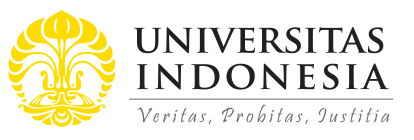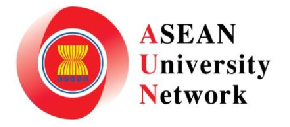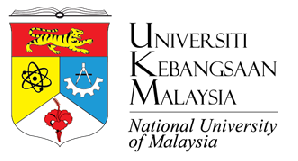
Abstract
Teaching Arabic as a foreign language (TAFL) in Indonesia has been interest of many scholars, but studies on TAFL in the context of industrial revolution (IR) 4.0 have been rarely conducted. This qualitative study was aimed at investigating the challenges and opportunities in accelerating the quality of Arabic language instruction in the IR 4.0 era. Qualitative data analysis consisting of four steps, namely, data collection, data reduction, data presentation, and data verification was applied to analyze the gathered data. According to the research results, the challenges are the following: Arabic language teachers’ limited adaptation to technology, students’ low motivation to learn, and uncertainty of policies on TAFL practices. The opportunities to effectively establish Arabic teaching and learning are government support, demands on Arabic language skills in modern workplaces, and availability of interactive multimedia.
References
Afrianto. (2018). Being a Professional Teacher in the Era of Industrial Revolution 4. 0: Opportunities , Challenges and Strategies for Innovative Classroom Practices. English Language Teaching and Research, 2(1), 1–13. http://ejournal.unp.ac.id/index.php/eltar/article/view/102675
Albantani, A. M. (2018). Optimization of Busuu Applications in Learning of Independent Arabic Language. Arabic: Journal of Arabic Studies, 3(1), 1–10. http://journal.imla.or.id/index.php/arabi/article/download/78/32
Albantani, A. M., & Madkur, A. (2017). Musyahadat Al Fidyu: Youtube-Based Teaching and Learning of Arabic As Foreign Language ( AFL ). Dinamika Ilmu, 17(2), 291–308. https://eric.ed.gov/?id=EJ1169438
Al-Huri, I. (2015). Arabic Language: Historic and Sociolinguistic Characteristics. English Literature and Language Review, 1(4), 28–36. https://doi.org/10.13140/RG.2.2.16163.66089/1
Alili, S. A., & Hassan, W. (2017). Attitudes of Arabic- and Non-Arabic Speaking Parents Toward the Importance of Learning Arabic in the United States. Journal of the National Council of Less Commonly Taught Languages, 21(1), 1–36. https://www.ingentaconnect.com/content/doaj/19309031/2017/00000021/00000001/art00001
Almekhlafi, A. G., & Almeqdadi, F. A. (2010). Teachers’ perceptions of technology integration in the United Arab Emirates school classrooms. Educational Technology and Society, 13(1), 165–175. https://www.jstor.org/stable/pdf/jeductechsoci.13.1.165.pdf
Angelianawati, L. (2019). Being an Englishteacher in Industrial Revolution 4. 0: An Overview About Roles, Challenges, and Implications. Jurnal Dinamika Pendidikan, 11(3), 307–316. https://doi.org/10.33541/jdp.v11i3.896
Anggraeni, C. W. (2018). Promoting Education 4. 0 in English for Survival Class: What are the Challenges ? Metathesis: Journal of English Language, Literature, and Teaching, 2(1), 12–24. https://doi.org/10.31002/metathesis.v1i2.676
Arifin, A. Z. (2018). Eksistensi Bahasa Arab di Era Revolusi Industri 4.0. Eksistensi Bahasa Arab Di Era Revolusi Industri 4.0, 1–12. Makassar: Universitas Muhammadiyah Makassar.
Ayu, N. A. K. (2017). Peluang Social Innovation dalam Revolusi Industri 4.0: Bagaimana Perkembangannya di Indonesia? Yogyakarta: Forbil Institute.
Azzuhri, M. (2009). Metode dan Media Pembelajaran Bahasa Arab Berbasis Internet di Era Teknologi Informasi (Methods and Media for Learning Arabic on Internet-Based in the Information Technology Age). INSANIA, 14(3), 348–445. http://ejournal.iainpurwokerto.ac.id/index.php/insania/article/view/360
Budiman, M. (2015). Kecemasan Berbahasa Asing (Bahasa Arab). Lensa: Kajian Kebahasaan, Kesusastraan, Dan Budaya, 5(2), 109–131. https://jurnal.unimus.ac.id/index.php/lensa/article/view/1785
Bulkisah, B. (2017). Pembelajaran Bahasa Arab Pada Perguruan Tinggi Agama Islam Di Indonesia. Jurnal Ilmiah Didaktika, 12(2), 308–318. https://doi.org/10.22373/jid.v12i2.455
Chandra, Y., Yusuf, A. M., & Jaya, Y. (2017). Motivasi Belajar Siswa Madrsah Aliyah dalam Mengikuti Mata Pelajaran Bahasa Arab dan Implikasinya dalam Layanan Bimbingan dan Konseling (Studi pada Siswa Madrasah Aliyah Negeri 1 Sungai Penuh yang Berasal dari Sekolah Menengah Pertama). Konselor, 5(2), 83. https://doi.org/10.24036/02016526544-0-00
Cresswell, J. (1998). Research Desig: Qualitative & Quantitative Approaches. Thousand Oaks, CA: SAGE Publication.
Dajani, B. (2006). Arabic Language Learning and Motivation. Multilingualism across Europe, 1–22. http://citeseerx.ist.psu.edu/viewdoc/download?doi=10.1.1.443.4539&rep=rep1&type=pdf#page=77
Decoito, I., & Richardson, T. (2018). Teachers and Technology: Present Practice and Future Directions. Contemporary Issues in Technology and Teacher Education, 18(2), 362–378. https://www.learntechlib.org/primary/p/180395/
Ghavifekr, S., Kunjappan, T., Ramasamy, L., & Anthony, A. (2016). Teaching and Learning with ICT Tools: Issues and Challenges from Teachers’ Perceptions. Malaysian Online Journal of Educational Technology, 4(2), 38–57. https://eric.ed.gov/?id=EJ1096028
Ghenghesh, P. (2010). The Motivation of Learners of Arabic: Does it Decrease with Age? Journal of Language Teaching and ResearchJournal of Language Teaching and Research, 1(3), 235–249. https://doi.org/10.4304/jltr.1.3.235-249
Halimah, Ibrahim, G. A., & Lustyantie, N. (2018). Cello as a Language Teaching Method in Industrial Revolution 4.0 Era. English Review: Journal of English Education, 7(1), 75–82. https://journal.uniku.ac.id/index.php/ERJEE/article/view/1497
Hanani, N. (2018). Prospek Pendidikan Bahasa Arab di Indonesia Pada Era Perkembangan Zaman. Didaktika Religia, 4(2), 23–38. https://doi.org/10.30762/didaktika.v4.i2.p23-38.2016
Haque, M. Z. (2017). Method of Teaching The Four Skills of Arabic Language by Technology. The International Conference on Arabic Studies and Islamic Civilization, 1–13. Kuala Lumpur. https://www.academia.edu/download/54050446/Full_Paper.pdf
Husseinali, G. (2006). Who is studying Arabic and why? A survey of Arabic students’ orientations at a major university. Foreign Language Annals, 39(3), 395–412. https://doi.org/10.1111/j.1944-9720.2006.tb02896.x
Islam, A. M. S. (2015). Faktor Demotivasi Pembelajaran Bahasa Arab dalam Perspektif Siswa Madrasah. Arabiyat: Jurnal Pendidikan Bahasa Arab Dan Kebahasaaraban, 2(1), 1–16. http://dx.doi.org/10.15408/a.v2i1.1511
Jaafar, E. A. (2018). Arabize , Arabization , and Arabic Language. Baghdad. https://doi.org/10.13140/RG.2.2.20185.98409
Jolin, L. (2014). Why language skills are great for business. The Guardian. https://www.theguardian.com/small-business-network/2014/dec/16/language-skills-great-business
Jouejati, S. (2011). Integrating Technology into Arabic Classroom Engaging the iGeneration. 12th ISNA Education Forum, 1–12. Chicago. http://www.isna.net/wp-content/uploads/2016/10/integrating_technology_in_ the_arabic_classroom-isna.ed_.2011.pdf
Kuraedah, S., Insawan, H., & Wahyuni, I. (2018). The Reality of Arabic Learning Guidance in Indonesian Islamic Senior High Schools. IOP Conference Series: Earth and Environmental Science, 175(1), 1–7. https://doi.org/10.1088/1755-1315/175/1/012153
Miles, M. B., & Huberman, A M. (1994). Qualitative Data Analysis: A Sourcebook for New Methods (2nded.). (2nd ed.). Tousands Oaks, CA: SAGE.
Morrow, J. A., & Castleton, B. (2007). The Impact of Globalization on the Arabic Language. Intercultural Communication Studies, XVI(2), 202–212. https://www.academia.edu/5955497/Intercultural_Communication_Studies_XVI_2_2007_The_Impact_of_Globalization_on_the_Arabic_Language
Mundy, M., Kupczynski, L., & Kee, R. (2012). Teacher’s Perceptions of Technology Use in the Schools. SAGE Open, 1–8. https://doi.org/10.1177/2158244012440813
Muradi, A. (2016). Pengembangan Kompetensi Guru Bahasa Arab Melalui IMLA sebagai Organisasi Profesi. Arabi: Journal of Arabic Studies, 1(2), 1–10. http://dx.doi.org/10.24865/ajas.v1i2.2
Musgamy, A. (2015). Tariqah al-Qawaid Wa Al-Tarjamah. Al-Daulah, 4(2), 391–402. http://journal.uin-alauddin.ac.id/index.php/al_daulah/article/view/1490
Nailufar, Y. (2018). Analysis of Motivations to Study English and Arabic. English Education Journal, 9(2), 328–345. http://jurnal.unsyiah.ac.id/EEJ/article/view/11552
Phillpott, S. (2018). The 7 Best Languages to Learn in 2018. Retrieved May 2, 2019, from CareerAddict website: https://www.careeraddict.com/best-languages
Ridlo, U. (2015). Bahasa Arab dalam pusaran arus globalisasi: Antara pesismisme dan optimisme. Ihya Al-’Arabiyah, 1(2), 210–226. http://jurnal.uinsu.ac.id/index.php/ihya/article/view/1528
Robinson, K. (2016). The Effect of Technology Integration on High School Students ’ Literacy Achievement. Teaching English with Technology, 16(3), 3–16. https://eric.ed.gov/?id=EJ1135683
Rozak, A., & Albantani, A. M. (2018). Arabic Learning Design through Google Classroom. Arabiyat: Journal of Arabic Language Education and Language, 5(1), 83–102. https://doi.org/10.15408/a.v5i1.7481
Rukimin & Koderi. (2015). MULTIMEDIA INTERAKTIF DALAM PEMBELAJARAN BAHASA ARAB (Interactive Multimedia in Arabic Language Learning). Teknodika, 1–10. http://jurnal.fkip.uns.ac.id/index.php/teknodika/article/view/8285
Sa’fan, M. A., & Mahmud, S. T. (2005). Al-Mu’allim: I’daduhuh wa Makanatuhu wa Adwaruhu. Kairo: Dar al-Kitab al-Hadits.
Schwab, K. (2017). The Fourth Industrial Revolution. Cologny/Geneva: World Economic Forum.
Shahroom, A. A., & Hussin, N. (2018). Industrial Revolution 4. 0 and Education. International Journal of Academic Research in Business and Social Sciences, 8(9), 314–319. https://doi.org/10.6007/IJARBSS/v8-i9/4593
Shyamlee, S. D. (2012). “ Use of Technology in English Language Teaching and Learning ”: An Analysis . International Conference on Language, Medias and Culture, 33, 150–156. Singapore: IACSIT Press. http://www.ipedr.com/vol33/030-ICLMC2012-L10042.pdf
Skenderi, L., & Skender, F. (2017). Teachers Perceptions of Technology Use in Schools. 14th International Conference “The Power of Knowledge,” 1–5. https://doi.org/10.26634/jsch.4.1.637
Suwandi, S. (2018). Tantangan mewujudkan pembelajaran bahasa dan sastra indonesia yang efektif di era revolusi industri 4.0 1. Kongres Bahasa Indonesia XI, 1–20. http://kbi.kemdikbud.go.id/kbi_back/file/dokumen_makalah/dokumen_makalah_1540468786.pdf
Taha-Thomure, H. (2008). The status of Arabic language teaching today. Education, Business and Society: Contemporary Middle Eastern Issues, 1(3), 186–192. https://doi.org/10.1108/17537980810909805
Taufiqurrochman, R. (2019). The Use of Arabic Electronic Dictionaries in The Industrial Revolution Era 4. 0. EasyChair Preprint, 753. https://easychair.org/publications/preprint/P6Jk
Tilaar, H. A. R., & Nugroho, R. (2012). Kebijakan Pendidikan. Yogyakarta: Pustaka Pelajar.
Tim Penyusun. (2019, October 12). Visi dan Misi IMLA. Retrieved from http://imla.or.id/visi/
Wahab, M. A. (2008). Epistemologi dan Metodologi Pembelajaran Bahasa Arab. (Jakarta: Lembaga Penelitian UIN Syarif Hidayatullah.
Wekke, I. S. (2015). Arabic Teaching and Learning: A Model from Indonesian Muslim Minority. Procedia - Social and Behavioral Sciences, 191, 286–290. https://doi.org/10.1016/j.sbspro.2015.04.236
Wekke, I. S., & Suhendar. (2016). Attitude and Learning Motivation on Arabic Learning in Muslim Minority of North Sulawesi. The International Conference Arabic Language Education and Literature and Islamic Values between Expectation and Realization, 56. https://doi.org/10.3929/ethz-b-000238666
Wekke, I. S., & Tamalia, G. (2016). Tantangan Pengembangan Pembelajaran Bahasa Arab Madrasah Masa Depan: Adaptasi dalam Teknologi Pendidikan. Seminar Nasional The 21st Century Skills Guru Pada Jenjang Pendidikan Dasar, 1–13. Jakarta. https://doi.org/10.13140/RG.2.2.11881.44649
Xing, B., & Marwala, T. (2017). Implications of the Fourth Industrial Age on Higher Education, The Thinker, 73, 10-15. http://www.thethinker.co.za/resources/73%20xing%20and%20marwala.pdf
Recommended Citation
Albantani, Azkia Muharom and Madkur, Ahmad
(2019).
Teaching Arabic in the era of Industrial Revolution 4.0 in Indonesia: Challenges and opportunities.
ASEAN Journal of Community Engagement, 3(2).
Available at: https://doi.org/10.7454/ajce.v3i2.1063







